Undoubtedly, the active volcanoes of the world are one of the most bewitching and beautiful and at the same time frightening natural phenomena. These geological formations played a key role in the process of Earth formation. Millennia ago there were a huge number of them all over the planet.
Today, there are few volcanoes that are still active. Some of them frighten, delight and at the same time destroy entire settlements. Let's see where the most famous active volcanoes are.
Lulhaillaco
Typical stratovolcano (has a layered, conical shape) 6739 m high. Located on the border of Chile and Argentina.
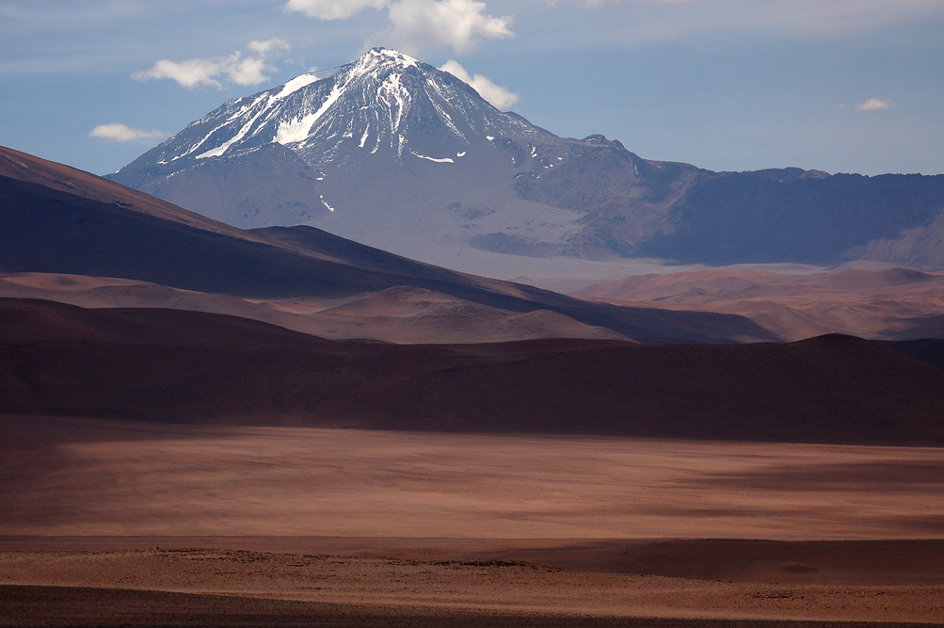
Such a complex name can be interpreted in different ways:
- “Water that cannot be found despite a long search”;
- "Soft mass that becomes hard."
On the side of the Chilean state at the foot of the volcano is the National Park with the same name - Lulhaillaco, so the surroundings of the mountain are very picturesque. When climbing to the top, tourists meet donkeys, many species of birds and guanacos living in natural conditions.
There are two routes to climb to the crater:
- North - duration 4.6 km, the road is suitable for travel by car;
- southern - duration 5 km.
If you are going to walk, take along special shoes and an ice ax, as there are snowy areas along the way.
Interesting fact! During the first ascent in 1952, an ancient Inca repository was discovered on the mountain, and in 1999, the mummies of a girl and a boy were found at the crater. According to scientists, they became ritual victims.
The most powerful eruptions were recorded three times - in 1854 and 1866. The last eruption of an active volcano occurred in 1877.
San pedro

The giant, 6145 meters high, is located in the Andes, in northern Chile near Bolivia in Western Cordillera. The peak of the volcano rises above the longest body of water in Chile - Loa.
San Pedro is on the list of the highest active volcanoes. For the first time managed to climb the crater in 1903. Today it is a unique attraction of Chile, which attracts thousands of tourists from all over the world. In the XX century, the volcano reminded of itself 7 times, the last time in 1960. For more than half a century, San Pedro resembles a bubbling cauldron that can explode at any time. At the foot there are signs that warn that climbing to the crater is possible only in a mask that protects against toxic emissions.
Interesting:
- San Pedro is one of the few volcanoes of the giants that has remained active until today. Many giants are recognized as extinct.
- Neighbor San Pedro - the volcano of San Pablo. It is located east and its height is 6150 m. Two mountains are connected by a high saddle.
- Residents of Chile tell many legends associated with the San Pedro volcano, since each eruption in the past was considered a heavenly sign and had mystical significance.
- For the descendants of migrants from Spain and local indigenous people, the volcano is a source of constant and considerable income.
El Misty
Among all the active volcanoes of the world on the map, this is rightfully considered the most beautiful. Its top is sometimes snowy. The mountain is located near the city of Arequipa, its height is 5822 meters. The volcano is notable for the fact that on its top there are two craters with diameters of almost 1 km and 550 m.
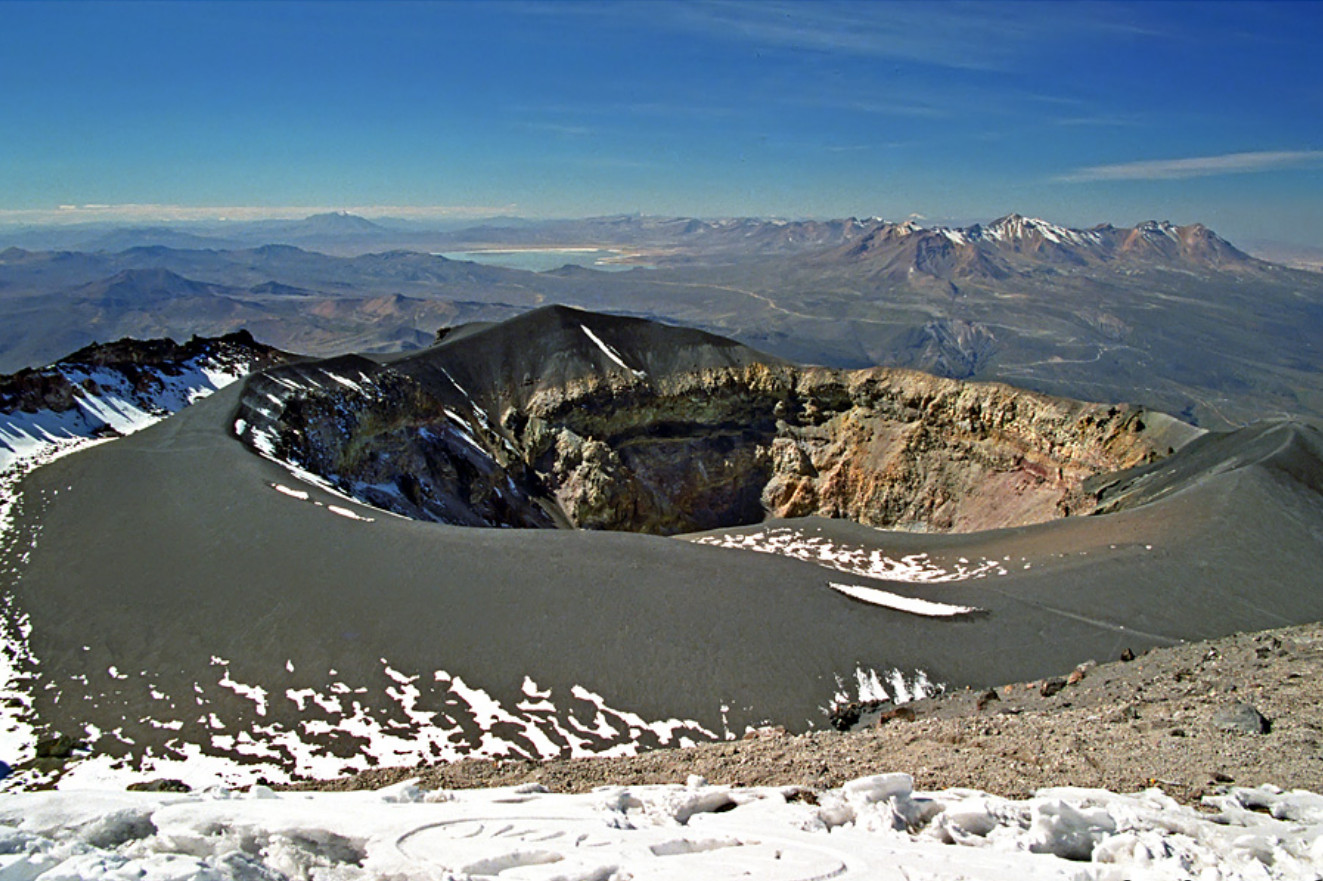
There are unusual parabolic dunes on the slopes. They appeared as a result of constant winds between El Misti and Mount Cerro Takune, they stretch for 20 km.
The first active action of the volcano was recorded during the resettlement of Europeans in Latin America. The strongest, destructive disaster occurred in 1438. In the XX century, the volcano several times showed activity of varying degrees:
- In 1948, for six months;
- in 1959;
- In 1985, steam was observed.
Scientists in Peru concluded several years ago that the seismic activity of the volcano is gradually increasing. This leads to earthquakes, which are not uncommon in this area. Given that El Misti is located near a large settlement in Peru, this makes it a rather dangerous active volcano.
Popocatepetl
Located in Mexico, the highest point reaches 5500 m above sea level. In the territory of the state it is the second highest mountain peak.
The Aztecs believed that worship of the volcano would rain, so they regularly brought offerings here.
Popocatepetl is dangerous because many cities have been built around it:
- the capitals of the states of Puebla and Tlascal;
- Mexico City and Cholula.
According to scientists, over its history the volcano erupted more than three dozen times. The last eruption was recorded in May 2013. During the crash, the airport of Puebla closed and the streets were covered with ashes. Despite the hidden danger, thousands of tourists from around the world come to the volcano every year to enjoy the scenery, listen to the legend and enjoy the greatness of the mountain.
Sangai Volcano
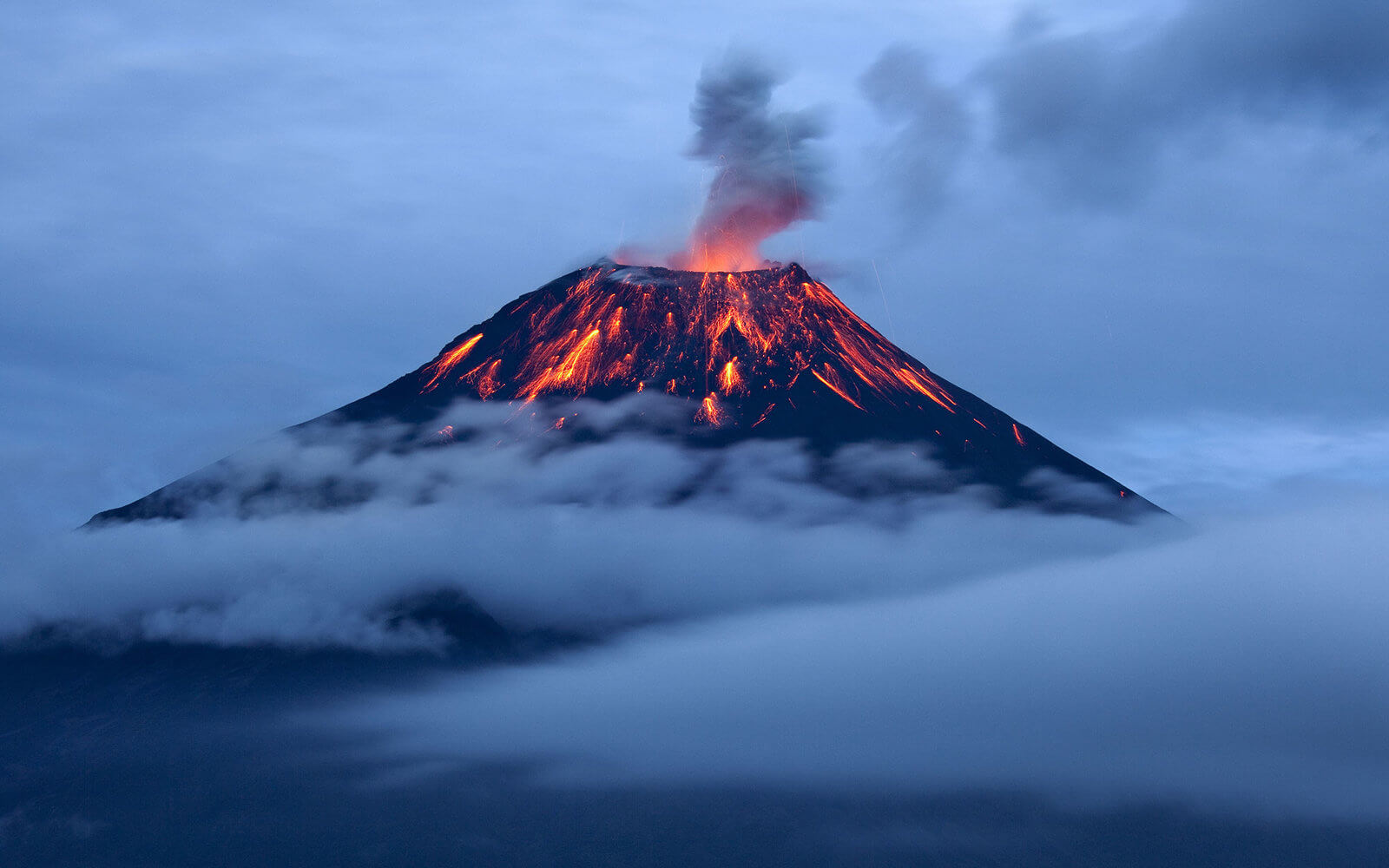
The top ten active volcanoes, which are the most powerful in the world, rightfully include Sangay. The mountain is located in South America, its height is 5230 meters. In translation, the name of the volcano means “awe-inspiring” and this fully reflects its behavior - eruptions are a frequent occurrence, and sometimes stones weighing 1 ton fall from the sky. At the top of the mountain, covered with eternal snows, there are three craters with a diameter of 50 to 100 meters.
The volcano is about 14 thousand years old, and the giant has shown particular activity in recent decades. One of the most destructive activities was recorded in 2006, the eruption lasted more than a year.
The first ascent took almost 1 month, today tourists travel comfortably, by car, people overcome the finish segment of the path by mule. The journey takes several days. In general, the trip is estimated as quite complicated, so few decide to climb the crater. Tourists who have conquered the mountain, smell strong sulfur and are surrounded by smoke. As a reward, an amazing landscape opens up from the top of the peak.
The volcano is surrounded by the Sangai National Park, whose area is more than 500 hectares. In 1992, UNESCO added the park to the list of endangered sites. However, in 2005 the object was removed from the list.
Interesting fact! In the park area there are three of the highest volcanoes in Ecuador - Sangay, Tungurahua and El Altar.
Klyuchevskaya Sopka
The volcano is the highest in the continent of Eurasia - 4750 meters, and its age is more than 7 thousand years. Klyuchevskaya Sopka is located in the central part of Kamchatka, several more volcanoes are nearby. The height of the giant increases after each eruption. There are more than 80 lateral craters on the slopes, so several lava flows form during the eruption.
The volcano is one of the most active in the world and announces itself regularly, approximately once every 3-5 years. The duration of each activity reaches several months. The first happened in 1737. During 2016, the volcano showed activity 55 times.
The most serious catastrophe was recorded in 1938, its duration is 13 months. As a result of the cataclysm, a crack 5 km long was formed. In 1945, the eruption was accompanied by a serious rockfall. And in 1974, the active actions of Klyuchevskaya Sopka led to the explosion of a glacier.
During the eruption of 1984-1987, a new peak formed, and ash emissions rose 15 km. In 2002, the volcano intensified, the highest activity recorded in 2005 and 2009. By 2010, the height of the mountain exceeded 5 km. In the spring of 2016, for another few weeks, another eruption occurred, accompanied by earthquakes, lava flows and ash emissions to a height of 11 km.
Mauna Loa
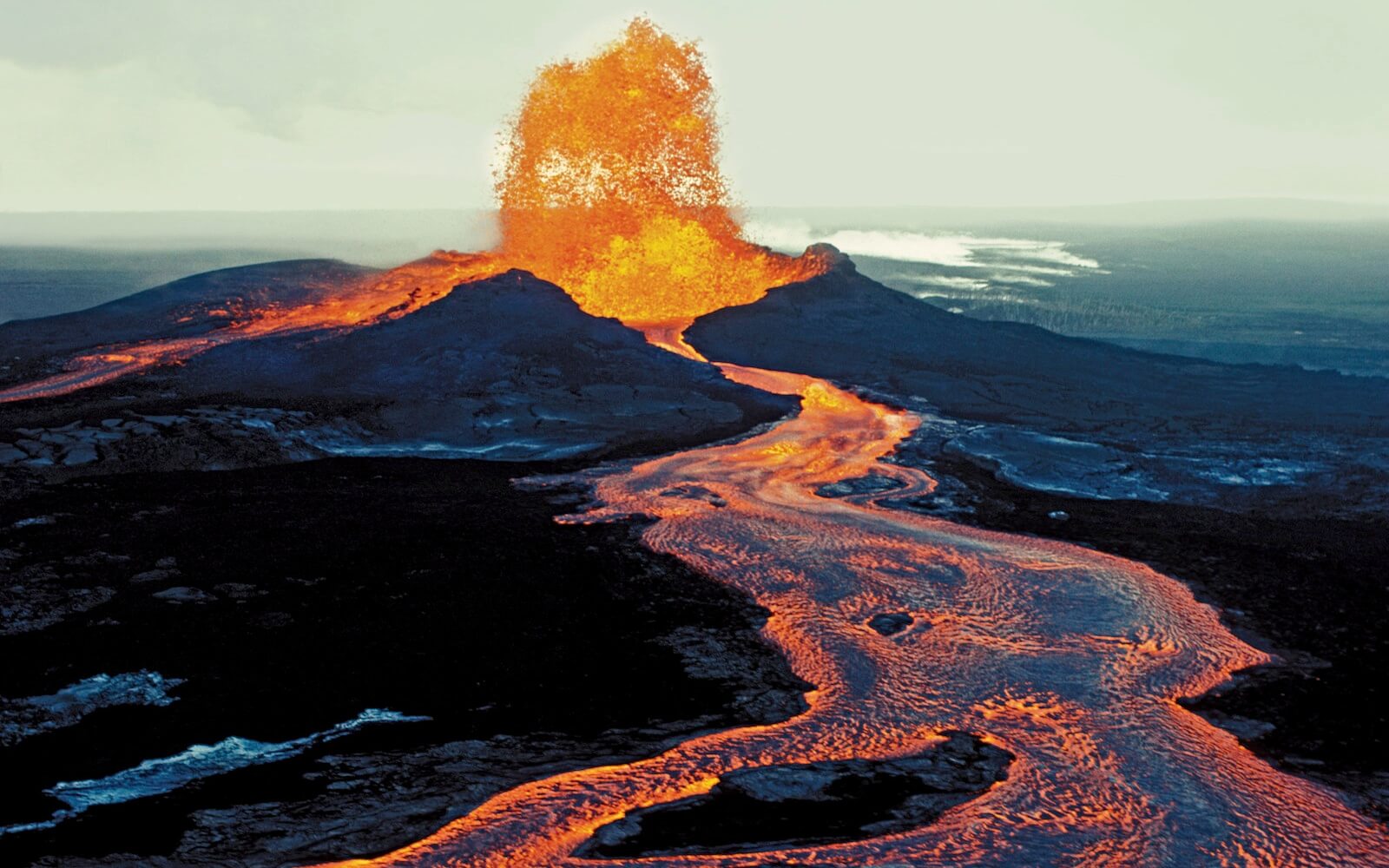
The eruption of this huge volcano can be observed from anywhere in Hawaii. Mauna Loa is located in an archipelago formed as a result of volcanic activity. Its height is 4169 meters. The peculiarity is that the crater is not round, so the distance from one edge to the other varies within 3-5 km. Residents of the island called Mount Long.
On a note! Many guides on the island lead tourists to the Mauna Kea volcano. It is really a little taller than Mauna Loa, but unlike the latter, it is already extinct. Therefore, be sure to specify which particular volcano you want to see.
Mauna Loa is 700 thousand years old, of which 300 thousand were under water. The volcano began to record the active actions only in the first half of the 19th century. During this time, he reminded himself more than 30 times. With each eruption, the size of the giant increases.
The most devastating disasters occurred in 1926 and 1950. The volcano destroyed several villages and the city. And the eruption in 1935 resembled the plot of the legendary Soviet film "Crew". The last activity was recorded in 1984, for 3 weeks lava poured from the crater. In 2013, several earthquakes occurred, which indicate that the volcano will soon again be able to show what it is capable of.
We can say that scientists are most interested in Mauna Loa. According to seismologists, the volcano (one of the few in the world) will constantly erupt for another million years.
Cameroon
Located in the republic of the same name, on the shores of the Gulf of Guinea. This is the highest point of the state - 4040 meters. The foot of the mountain and its lower part are covered with tropical forests, there is no vegetation at the top, there is a small amount of snow.
In West Africa, this is the most active volcano of all active on the mainland. Over the past century, the giant has manifested itself 8 times. Each eruption resembles an explosion. The first mention of the disaster dates back to the 5th century BC. In 1922, volcanic lava reached the coast of the Atlantic Ocean. The last eruption occurred in 2000.
Good to know! The best time for climbing is December or January. In February, annual competitions are held here - "Race of Hope". Thousands of participants climb to the top, competing in speed.
Kerinci
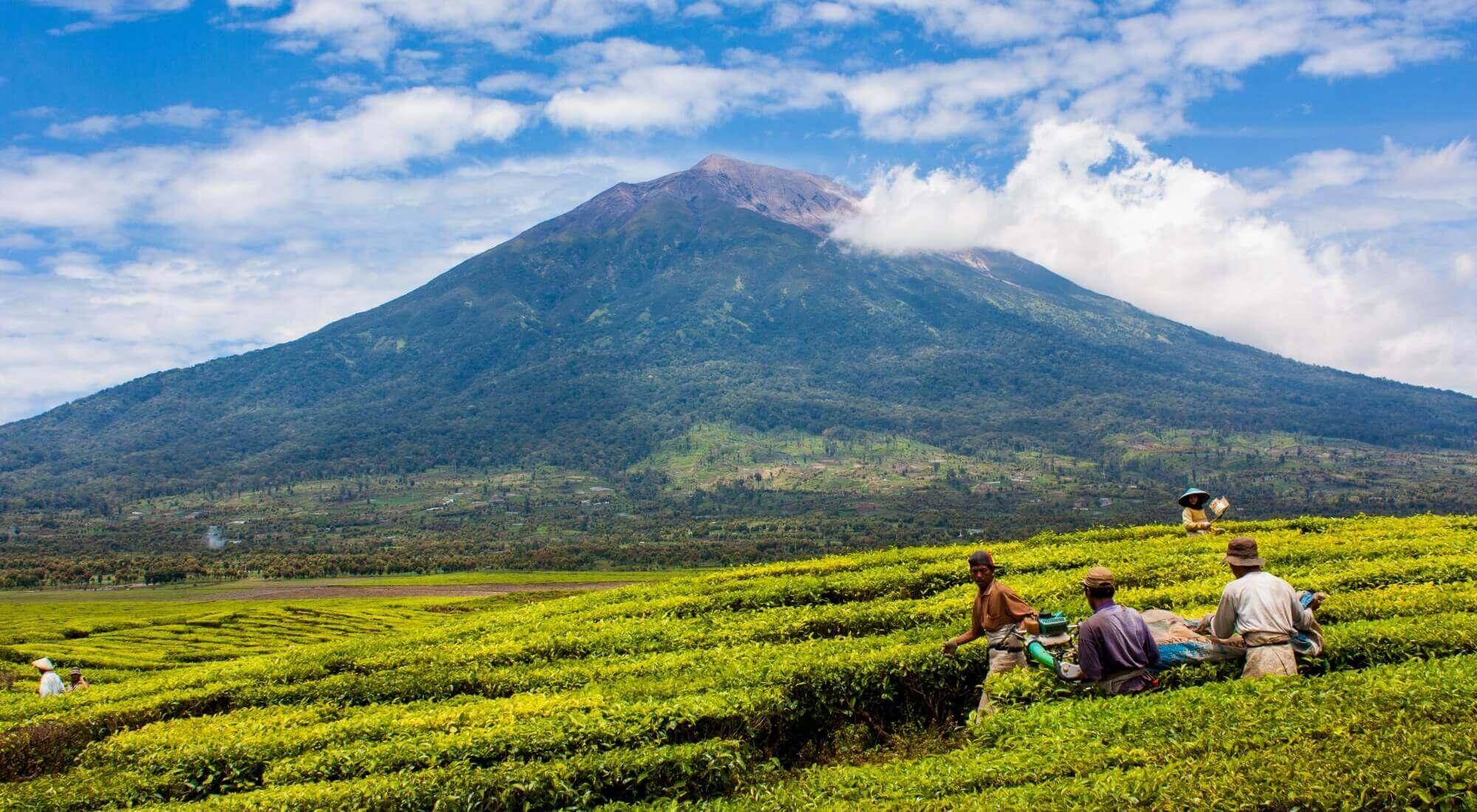
The highest volcano in Indonesia (its height reaches 3 km 800 meters) and the highest point in Sumatra. Located in the central part of the island, south from the city of Padang. Not far from the volcano is Keyinci Seblat Park, which has national status.
The crater depth is more than 600 meters, in its northeastern part there is a lake. A strong eruption was recorded in 2004, when a column of ash and smoke rose 1 km. The last serious disaster was recorded in 2009, and in 2011 volcano activity was felt in the form of characteristic tremors.
In the summer of 2013, the volcano threw an ash column 800 meters high. Residents of nearby settlements hastily packed their bags and evacuated. Ashes painted the sky gray, the air smelled of sulfur. Only 30 minutes passed, and several villages were covered with a thick layer of ash. Tea plantations, which are located near the volcano and were also affected by the disaster, caused concern. Fortunately, heavy rain fell after the event, and washed away the consequences of the eruption.
It is interesting! Climbing to the crater takes from 2 to 3 days. The route is laid through dense forests, most often the road is slippery. To overcome the path, you will need the help of a guide. There have been cases in history when travelers disappeared when they set off on their own. It is best to start climbing in the village of Kersik Tua.
Erebus
Active volcanoes on every continent (except Australia) attract the attention of scientists and tourists. Even in Antarctica is one of them - Erebus. This volcano is located south of other objects that are the subject of research by seismologists. The height of the mountain is 3 km 794 m., And the size of the crater is a little more than 800 m.
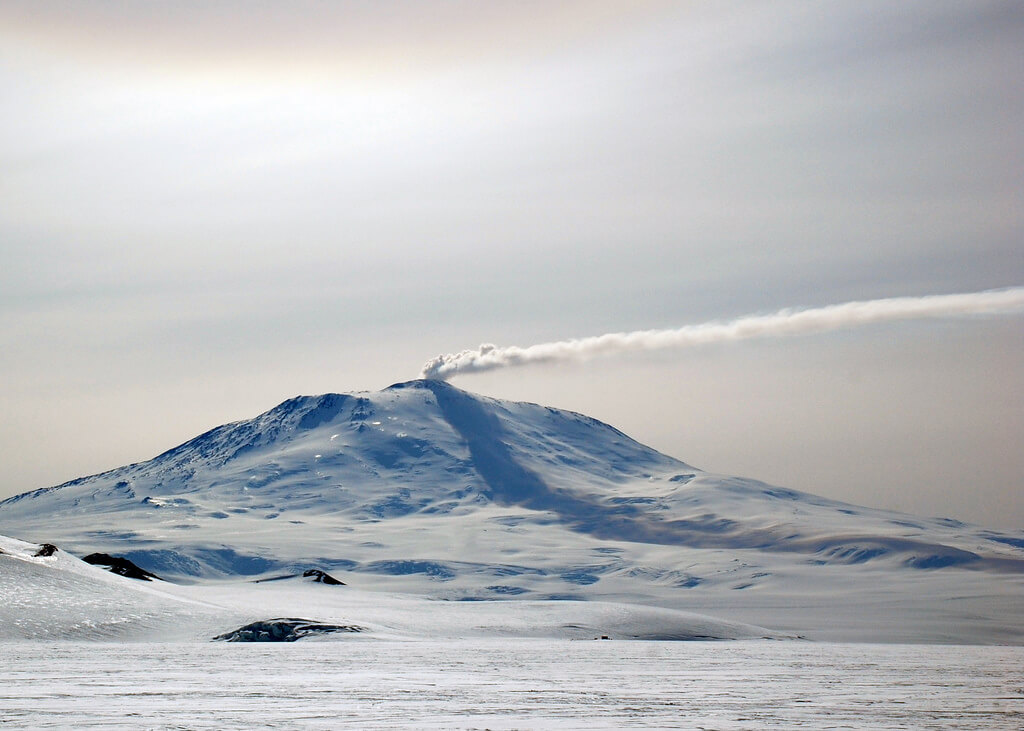
The volcano has been active since the end of the last century, then a station was opened in the state of New Mexico, its employees monitor its activities. A unique phenomenon of Erebus is the lava lake.
The object is named after the god Erebus. The mountain is located in the fault zone, which is why the volcano is recognized as one of the most active in the world. The gases emitted cause serious damage to the ozone layer. Scientists note that it is here that the thinnest layer of ozone.
Volcanic eruptions occur in the form of explosions, the lava is dense, solidifies quickly and does not have time to spread to large areas.
The main danger is ash, which impedes air travel, as visibility decreases sharply. A mud stream is also dangerous, since it moves at high speed, and it is almost impossible to escape from it.
Erebus is an amazing natural creation - formidable, magical and charming. The lake in the crater attracts special mystery.
Etna
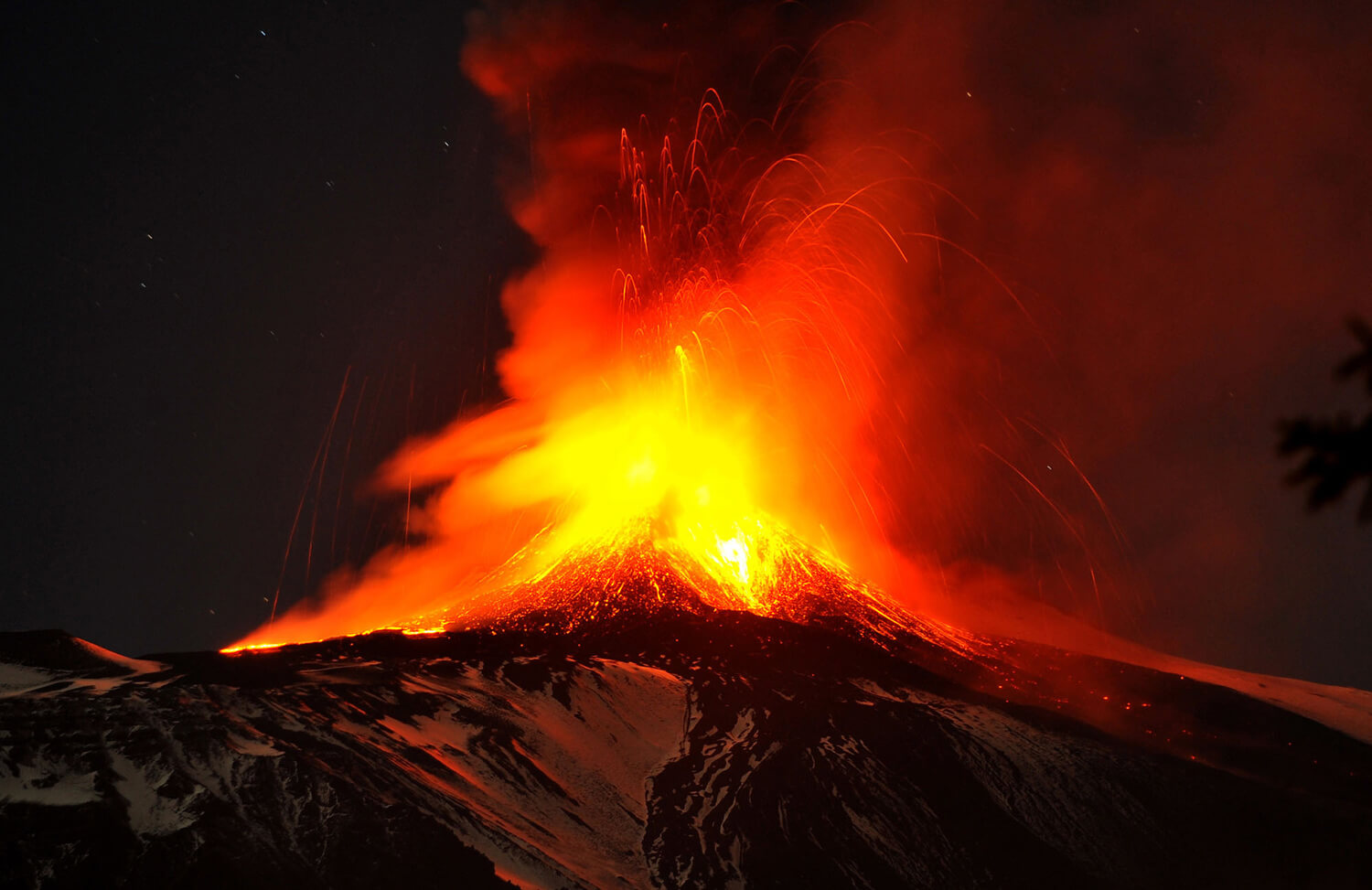
Located in Sicily in the Mediterranean Sea. With a height of 3329 meters, it cannot be attributed to the highest active volcanoes in the world, but it can confidently be credited to the most active. After each eruption, the height increases slightly. In Europe, this is the largest volcano; its peak is always decorated with a snow cap. The volcano has 4 central cones and about 400 lateral.
The first activity dates back to 1226 BC. The most terrible eruption occurred in 44 BC, it was so strong that the ashes completely covered the sky over the capital of Italy, destroyed the crop on the Mediterranean coast. Today Etna is no less dangerous than in the prehistoric period. The last eruption occurred in the spring of 2008 and lasted almost 420 days.
The volcano is attractive for its diverse vegetation, here you can find palm trees, cacti, pines, agaves, spruces, biscuses, fruit trees and vineyards. Some plants are characteristic only for Etna - a stone tree, ethnian violet. Numerous myths and legends are associated with the volcano and the mountain.
Kilauea
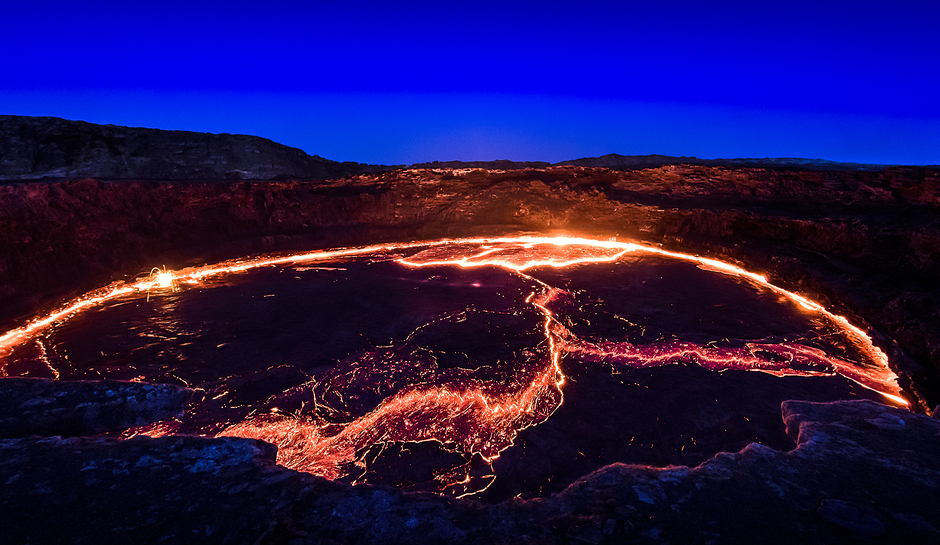
On the territory of the Hawaiian Islands it is the most active volcano (although far from the highest in the world). In Hawaiian, Kilauea means highly spreading. Eruptions have been ongoing continuously since 1983.
The volcano is located on the territory of the National Park of Volcanoes, its height is only 1 km 247 meters, but it compensates for its slight growth by activity. Kilauea appeared 25 thousand years ago, the diameter of the caldera of the volcano is considered one of the largest in the world - about 4.5 km.
Interesting! According to legend, the volcano is the residence of the goddess Pele (the goddess of volcanoes). Her tears are separate drops of lava, and her hair is streams of lava.
An amazing sight is the Puuoo Lava Lake, which is located in the crater. The molten rocks rage restlessly, creating amazing stains on the surface. Being close to this natural phenomenon is dangerous, as fiery lava erupts to a height of 500 meters.
In addition to the lake, you can admire the cave of natural origin. Its length is more than 60 km. The ceiling of the cave is decorated with stalactites. Tourists note that a cave walk resembles a flight to the moon.
In 1990, volcanic lava completely destroyed the village, the thickness of the lava layer was from 15 to 25 meters. For 25 years, the volcano destroyed almost 130 houses, destroyed 15 km of the roadway, and lava covered an area of 120 km.
The whole world watched the most powerful Kilauea eruption in 2014. The eruption was accompanied by periodic earthquakes. Huge volumes of lava destroyed residential buildings and existing farms. The evacuation of the nearest settlements was carried out, but not all residents showed a desire to leave their housing.
On which continent there are no active volcanoes
There are no extinct volcanoes or active volcanoes in Australia. This is due to the fact that the mainland is located far from the faults of the crust and volcanic lava does not have access to the surface.
The opposite of Australia is Japan - the country is located in the most dangerous tectonic zone. Here 4 tectonic plates collide.
Active volcanoes of the world are an amazing and frightening natural phenomenon. From 60 to 80 eruptions on different continents occur annually in the world.

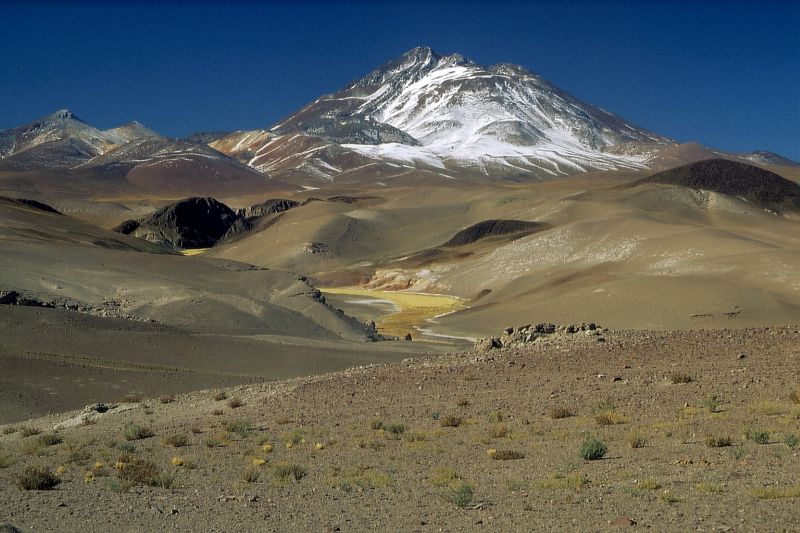

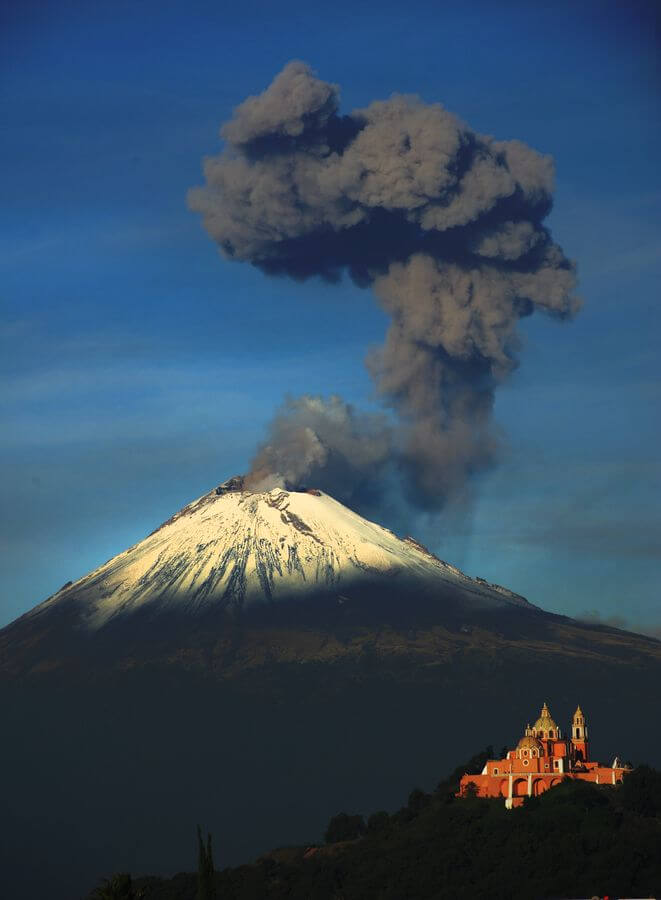

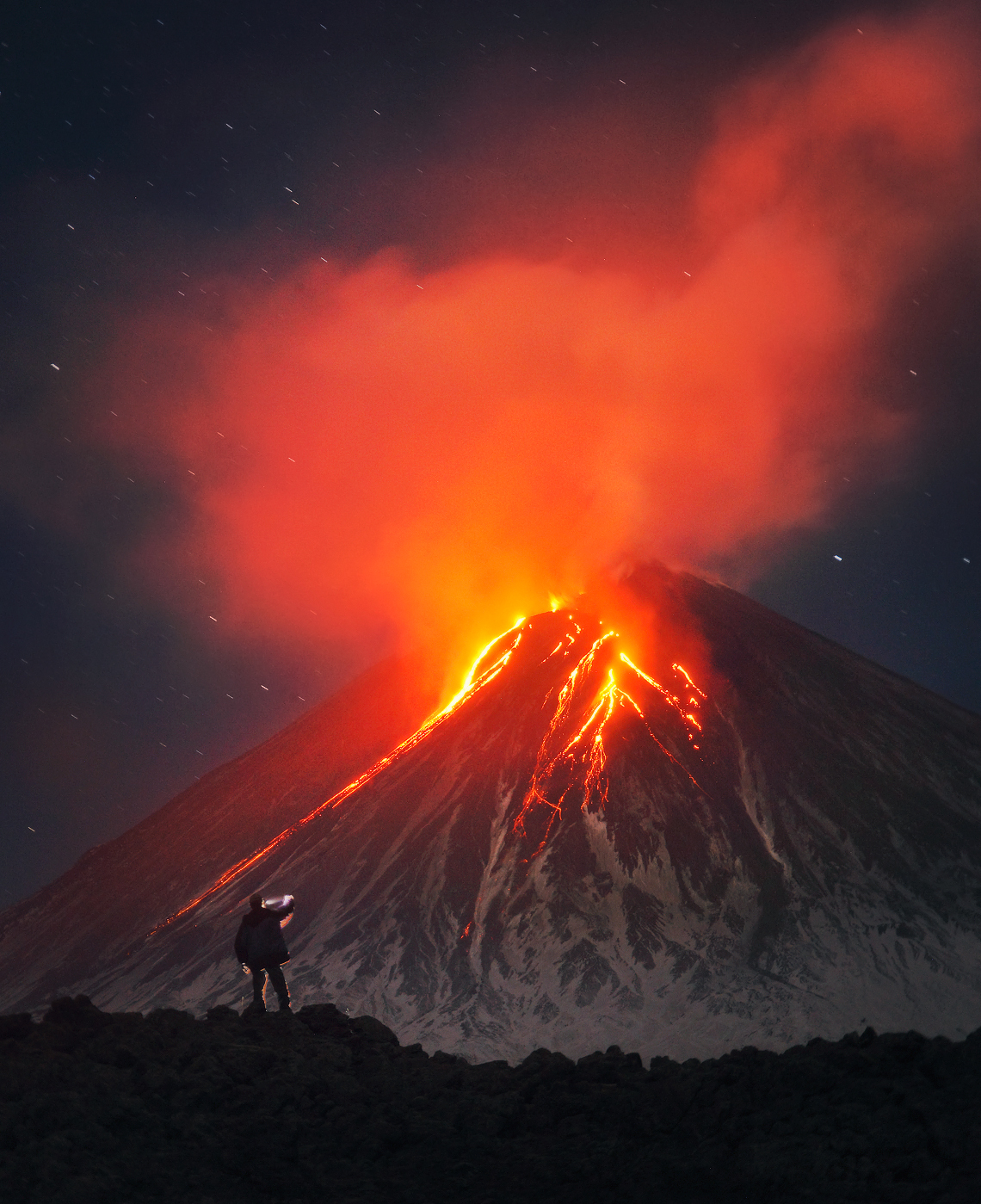
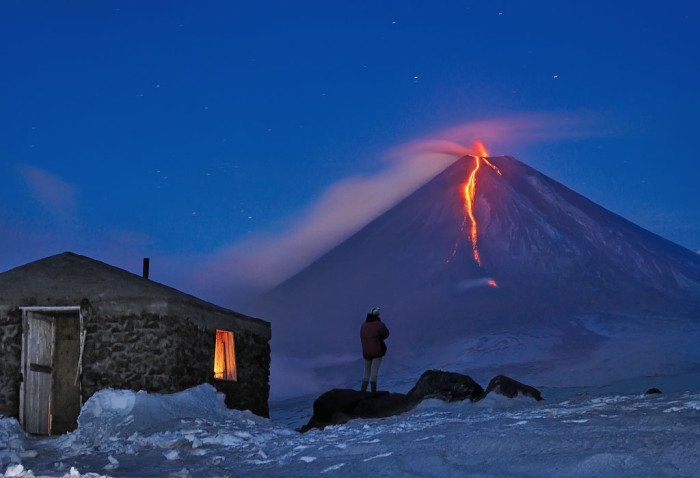
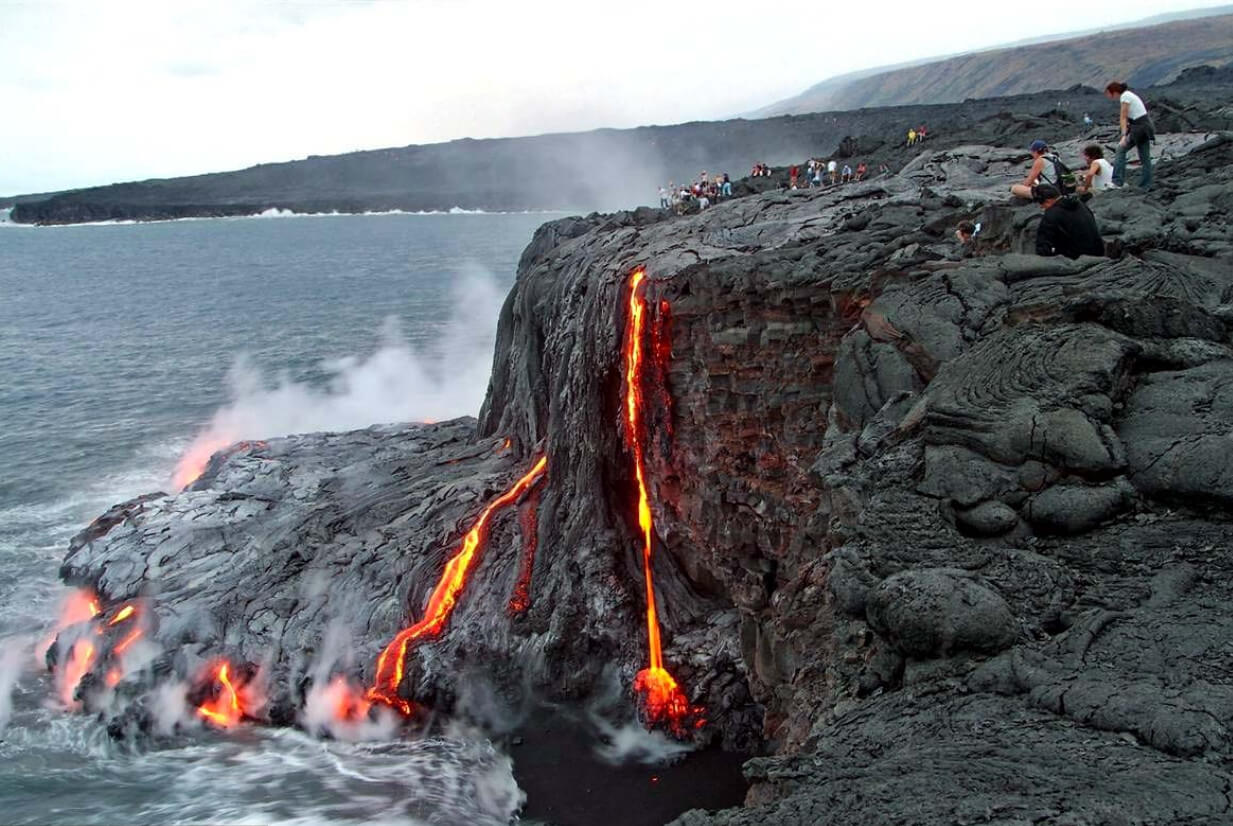
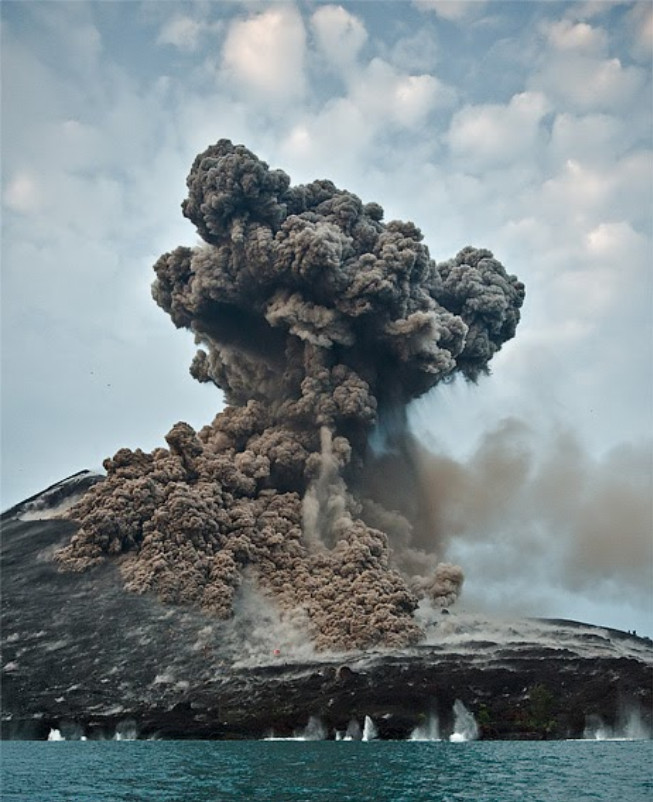
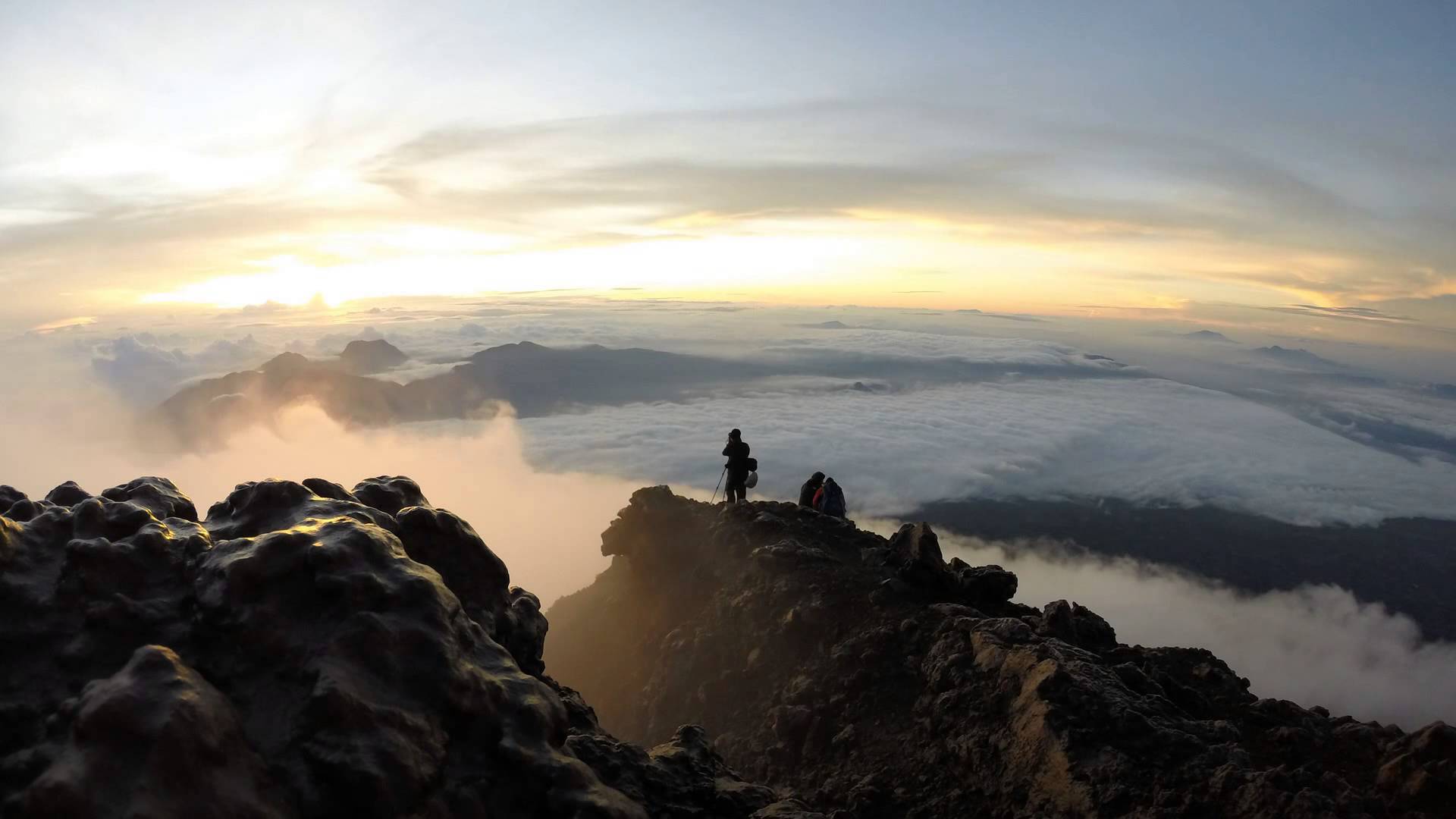
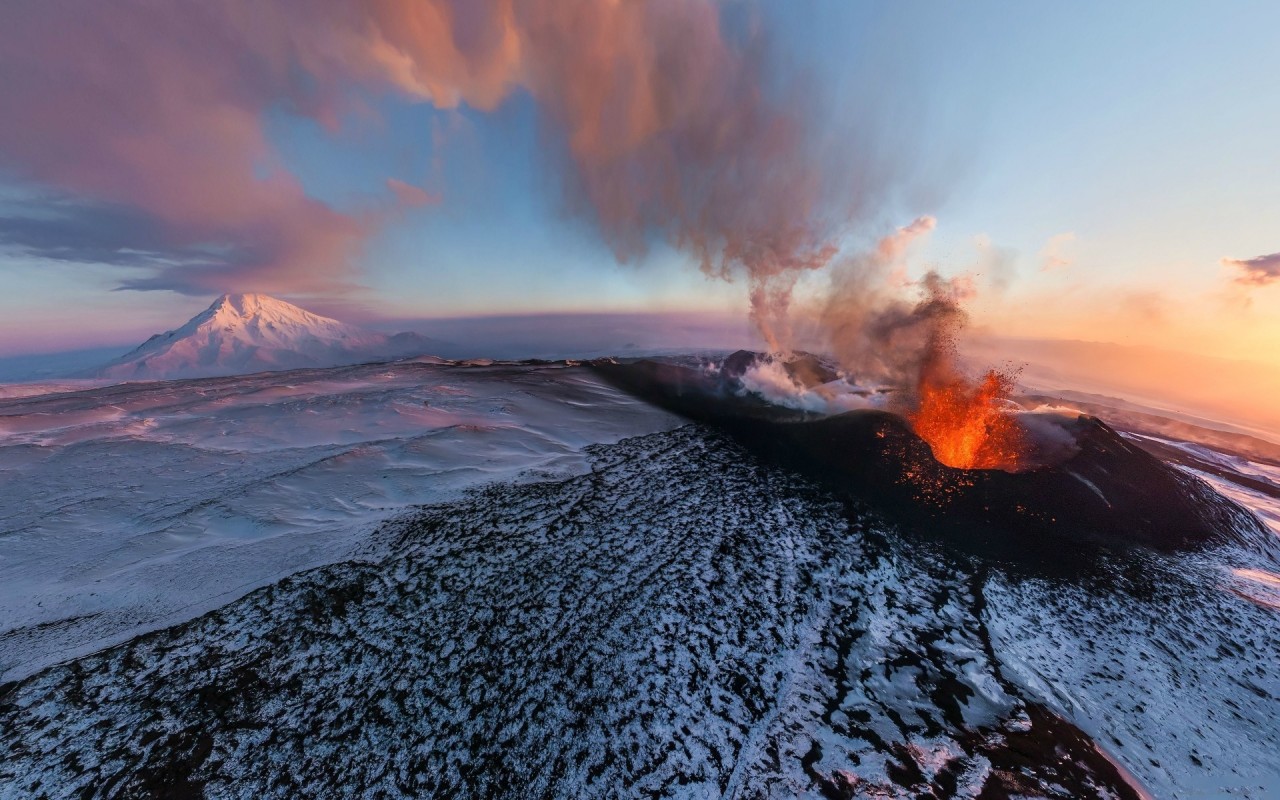
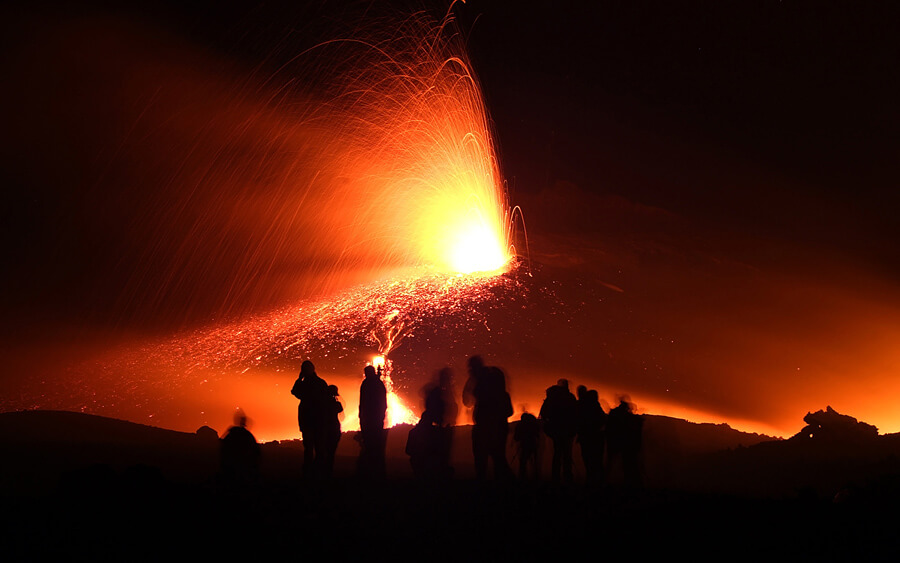
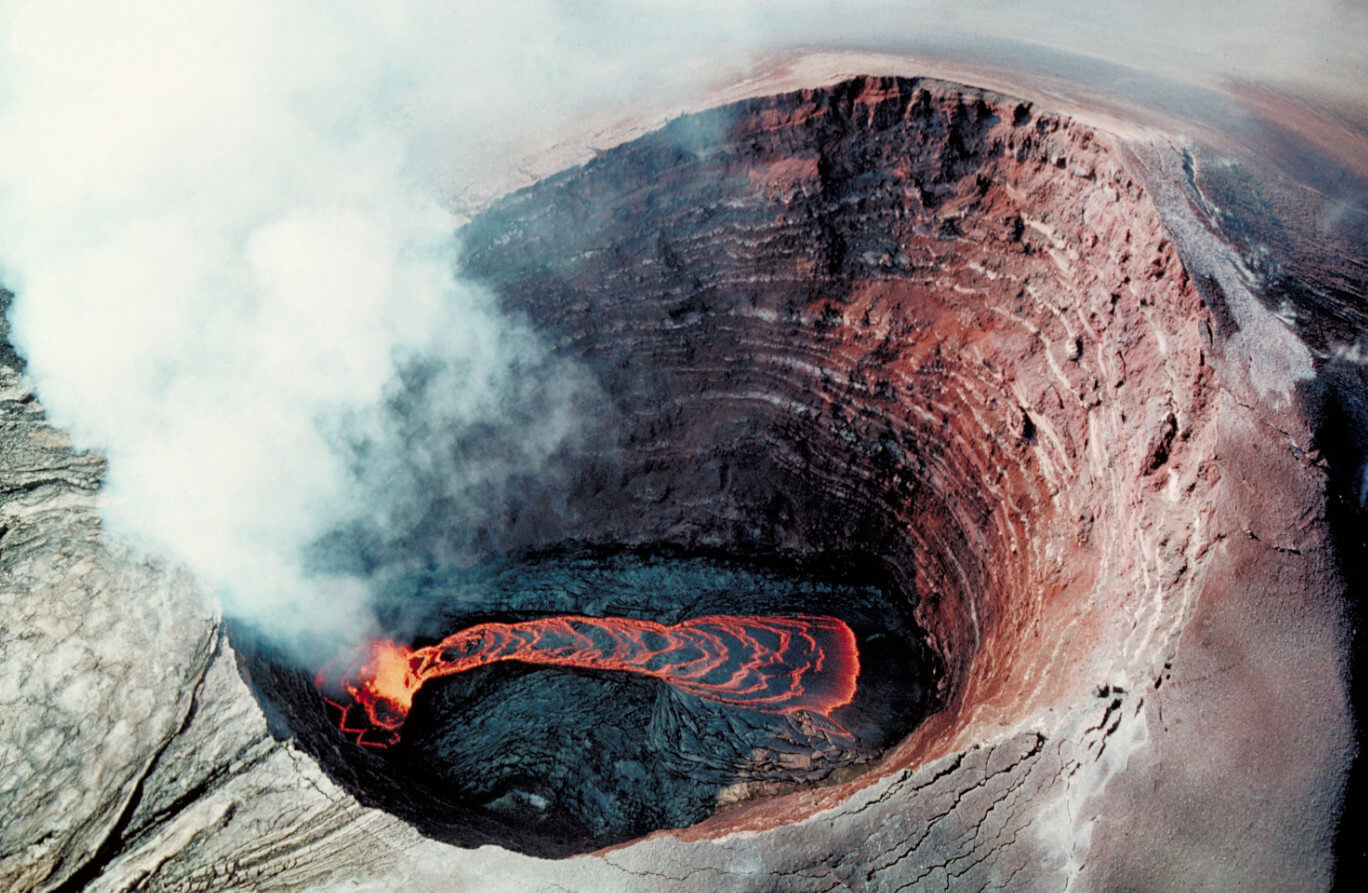
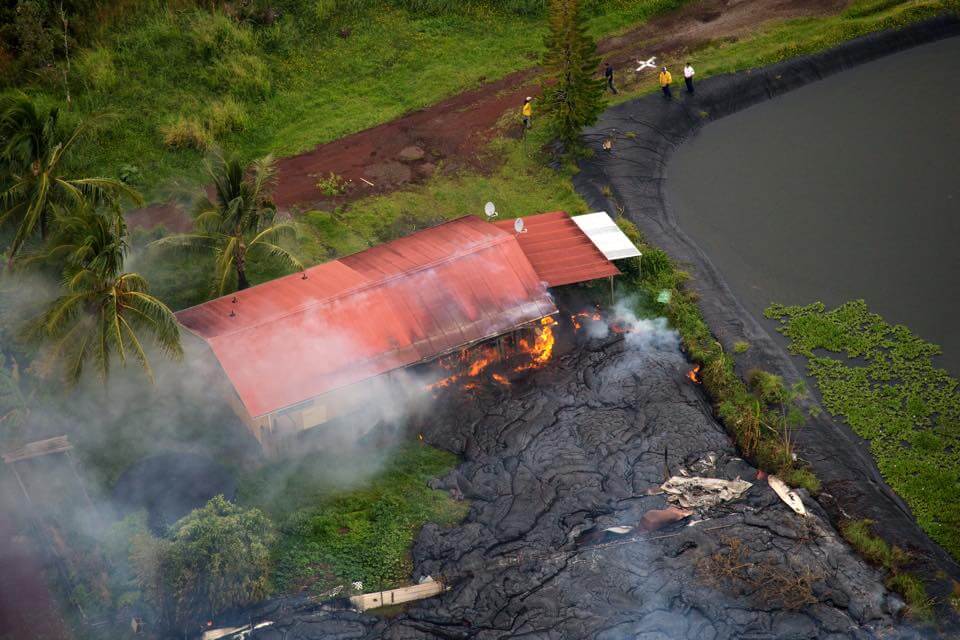
Post a Comment
Please Do Not Enter any spam link in the comment Box.